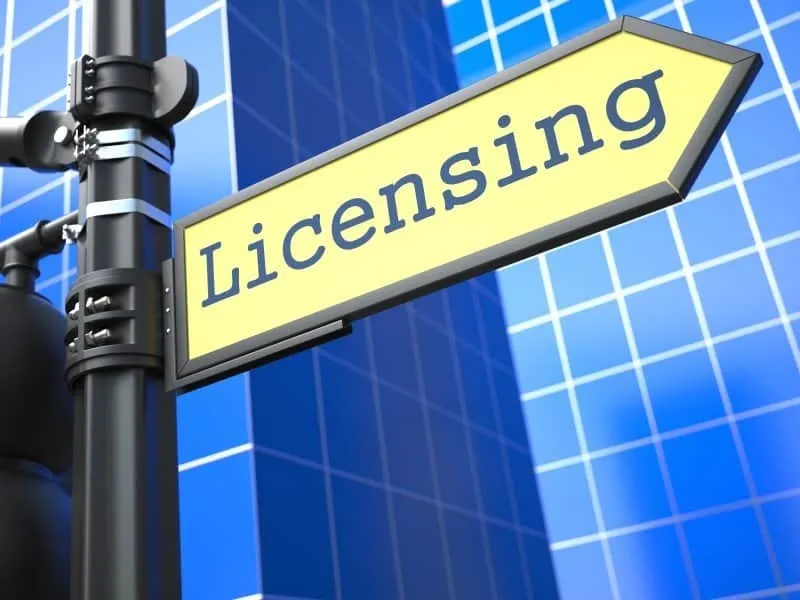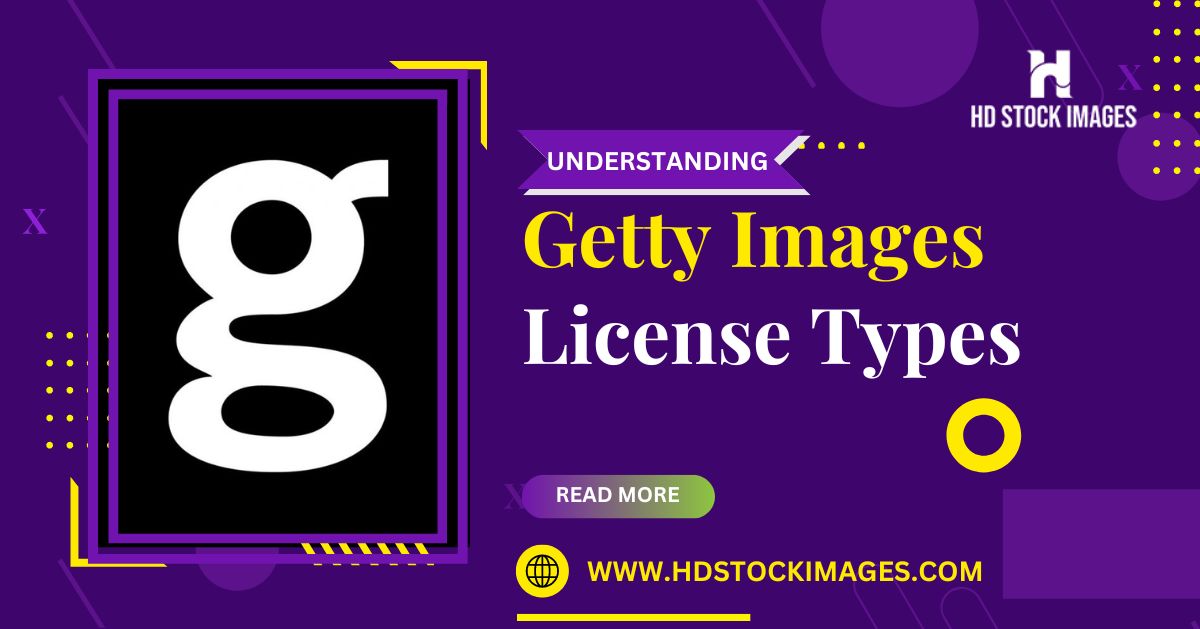1. Introduction
Welcome to our comprehensive guide on understanding Getty Images's license types and choosing the right usage for your needs. As one of the leading stock photo agencies, Getty Images offers a vast collection of high-quality images for various purposes. However, navigating their licensing options can be daunting.In this blog post, we will demystify the different license types, including Royalty-Free and Rights-Managed licenses, as well as Editorial Use licenses. By the end, you'll be equipped with the knowledge to make informed decisions when selecting the perfect image license that aligns with your project requirements and budget while ensuring legal compliance and respecting the photographers' rights.Also Read This: How Much Does a Getty Images Account Cost: Understanding Getty's Subscription and Payment Options
2. What is a Stock Photo License?
 A stock photo license is a legal agreement that grants the purchaser the right to use a specific photograph or image in a designated manner and under certain conditions. When you purchase a stock photo license, you are essentially obtaining permission from the image's copyright owner (usually a stock photo agency or photographer) to use the image for your intended purposes, while still respecting the creator's intellectual property rights.The license outlines the terms of use, which can vary depending on the type of license purchased. It typically includes details such as the allowed usage (e.g., commercial, editorial, personal), the duration of usage, geographical restrictions (if any), and any other limitations or permissions related to modifications, distribution, or exclusivity.Stock photo licenses are essential for using copyrighted images legally and avoiding copyright infringement issues. They ensure that both the image users and creators are protected and aware of how the image can be used in various contexts.
A stock photo license is a legal agreement that grants the purchaser the right to use a specific photograph or image in a designated manner and under certain conditions. When you purchase a stock photo license, you are essentially obtaining permission from the image's copyright owner (usually a stock photo agency or photographer) to use the image for your intended purposes, while still respecting the creator's intellectual property rights.The license outlines the terms of use, which can vary depending on the type of license purchased. It typically includes details such as the allowed usage (e.g., commercial, editorial, personal), the duration of usage, geographical restrictions (if any), and any other limitations or permissions related to modifications, distribution, or exclusivity.Stock photo licenses are essential for using copyrighted images legally and avoiding copyright infringement issues. They ensure that both the image users and creators are protected and aware of how the image can be used in various contexts.Also Read This: Rotating an Image in Snipping Tool: Easy Steps
3. Getty Images License Types
Getty Images offers several license types to cater to different usage needs and budget constraints. Understanding these license types will help you choose the one that best aligns with your specific requirements:| License Type | Short Description |
|---|---|
| Royalty-Free (RF) | Pay once, use multiple times for various commercial uses. |
| Rights-Managed (RM) | Specific usage terms and pricing based on exclusivity. |
| Editorial Use | Intended for non-commercial use, like news reporting. |
A. Royalty-Free (RF) License:
- Definition and key features:
- The Royalty-Free license allows users to pay a one-time fee to access and use the image multiple times without additional payments.
- It offers a broad range of permitted uses, making it suitable for various commercial and non-commercial projects.
- Permitted uses and restrictions:
- RF images can be used in advertising, websites, social media, blogs, presentations, and more, for an indefinite period, as long as the usage adheres to the license agreement.
- However, RF licenses often have some restrictions, such as limitations on using images in trademarks, logos, or sensitive subjects without obtaining additional permissions.
- Pricing structure and usage limits:
- RF images are typically priced based on file size, resolution, and image quality.
- There might be limitations on the number of copies or impressions allowed for print usage, but digital usage is often unrestricted.
B. Rights-Managed (RM) License:
- Definition and key features:
- The Rights-Managed license offers more control over image usage and allows users to license images for specific purposes and durations.
- RM images are often higher in quality and may be more exclusive than RF images.
- Permitted uses and restrictions:
- RM images have more specific usage terms, such as usage in a particular advertisement, geographic location, or industry.
- Each usage requires a separate license, and the pricing depends on factors like image size, exclusivity, and intended use.
- How pricing is determined - factors affecting the cost:
- Pricing for RM images varies based on factors like the size of the image, duration of usage, exclusivity, and the intended purpose.
- Duration and exclusivity options:
- Users can license RM images for a specific period, after which a new license may be required for continued use.
- Exclusivity options allow users to restrict competitors from using the same image during the license duration.
C. Editorial Use License:
- Definition and scope of editorial use:
- Editorial Use licenses are specific to editorial purposes, such as news reporting, documentaries, or educational publications.
- They cover images of newsworthy events, public figures, and places, where commercial use might not be appropriate.
- Differentiating between commercial and editorial use:
- Editorial Use licenses cannot be used for commercial purposes, such as promoting products or services, as they are intended for non-commercial storytelling.
- Specific use cases and scenarios:
- Editorial Use licenses are suitable for publishers, journalists, bloggers, and other media-related entities to enhance their news or storytelling content.
jennie beating the getty images curse, a thread : pic.twitter.com/lvMozqECSh
— c (@janerubyx) August 8, 2023
Also Read This: How to Make Chocolate Videos on Dailymotion
4. Factors to Consider When Choosing a License
Choosing the right license for your image usage is crucial to meet your project needs while staying within legal and budgetary constraints. Here are some essential factors to consider when selecting a Getty Images license:A. Intended Use and Context:
1. Identify the purpose: Determine whether the image will be used for commercial, editorial, personal, or educational purposes. 2. Target audience and distribution: Consider where and how the image will be used, whether it's for online platforms, print media, or other specific channels.B. Budget Constraints:
1. Compare pricing models: Evaluate the costs associated with different license types, such as Royalty-Free or Rights-Managed licenses. 2. Cost-effectiveness: Consider the frequency of image usage and whether a one-time payment (RF) or per-use basis (RM) suits your budget better.C. Exclusivity and Competition:
1. Need for exclusivity: Determine if exclusivity is essential for your project, ensuring that the image won't be used by competitors. 2. Image popularity: Check how commonly the image has been used to avoid visual repetition in your industry or niche.D. Project Duration and Geographic Scope:
1. License duration: Assess how long you need to use the image. Choose between one-time use (RF) or specific timeframes (RM). 2. Geographic restrictions: Consider any limitations on where the image can be used, especially if your project targets specific regions.E. Editing and Modification:
1. Permitted changes: Understand the allowed modifications to the image, such as resizing, cropping, or adding text overlays. 2. Image quality: Check if the image resolution is suitable for your intended use after potential alterations.F. Attribution and Crediting:
1. Image credits: Determine if you are required to provide image credits or attributions when using the licensed image. 2. Crediting the creator: Acknowledge the photographer or agency responsible for the image's creation, as required.G. Renewing and Extending Licenses:
1. Renewal options: Check if the license allows for renewal after its expiration, ensuring continued use if needed. 2. Extension possibilities: Evaluate the feasibility of extending the license duration in case your project extends beyond the initial timeframe.By carefully considering these factors, you can make an informed decision and choose the Getty Images license type that best suits your project requirements, aligns with your budget, and ensures compliance with image usage regulations. Remember that understanding the license terms and adhering to them not only protects your legal standing but also respects the creative efforts of the photographers and content creators.The following video is about Getty Images:Also Read This: Distorting an Image: Techniques and Tips
5. Tips for Maximizing License Usage
To make the most of your Getty Images license and ensure you get the best value from your purchased image, consider these tips for maximizing license usage:A. Editing and Modification:
1. Be creative but within bounds: Take advantage of the allowed modifications to fit the image seamlessly into your project, but avoid violating the license terms. 2. Maintain image quality: When resizing or cropping, ensure the image remains high-quality and suitable for your intended use.B. Attribution and Crediting:
1. Follow attribution requirements: If the license mandates image credits, include the photographer's or agency's name in a visible and appropriate manner. 2. Be consistent with credits: Use the same format for image credits throughout your project to maintain a professional and cohesive appearance.C. Renewing and Extending Licenses:
1. Monitor license expiration: Keep track of the license duration to avoid unintentional usage violations after it expires. 2. Renew in advance: Consider renewing the license before it expires to ensure continuity in using the image.D. Licensing for Multiple Projects:
1. Check multiple usage options: Some licenses may allow using the same image in different projects without extra fees. Verify this possibility to save on licensing costs. 2. Bundle purchases: Explore packages or bulk deals for multiple images if you have ongoing or future projects requiring images.E. Usage in Social Media and Online Platforms:
1. Comply with platform guidelines: Be aware of image size and format requirements for different social media platforms to ensure optimal presentation. 2. Avoid improper use: Respect platform guidelines and licensing terms to prevent potential legal issues and account suspensions.F. Collaboration and Sharing:
1. Share license details with team members: If others have access to the licensed image, ensure they understand the license terms and restrictions to prevent misuse. 2. Consider team or multi-user licenses: For collaborative projects, explore licensing options that cover multiple users.G. Planning for Future Projects:
1. Evaluate future image needs: Consider licensing images with extended usage rights if you anticipate using the same image in multiple future projects. 2. Budget for image licensing: Include image licensing costs in your project budget to ensure you can acquire the necessary images without last-minute restrictions.By following these tips, you can maximize the value and utility of your Getty Images license, making the most of the licensed image for your current and future creative endeavors while adhering to legal requirements and respecting the photographer's intellectual property rights.Also Read This: Find Out How to Add Photos to Shutterstock
6. Avoiding License Violations and Legal Consequences
 To protect yourself from license violations and potential legal consequences, it's crucial to adhere to the terms and conditions of the Getty Images license. Here are some essential guidelines to avoid license violations:
To protect yourself from license violations and potential legal consequences, it's crucial to adhere to the terms and conditions of the Getty Images license. Here are some essential guidelines to avoid license violations:
 admin
admin








